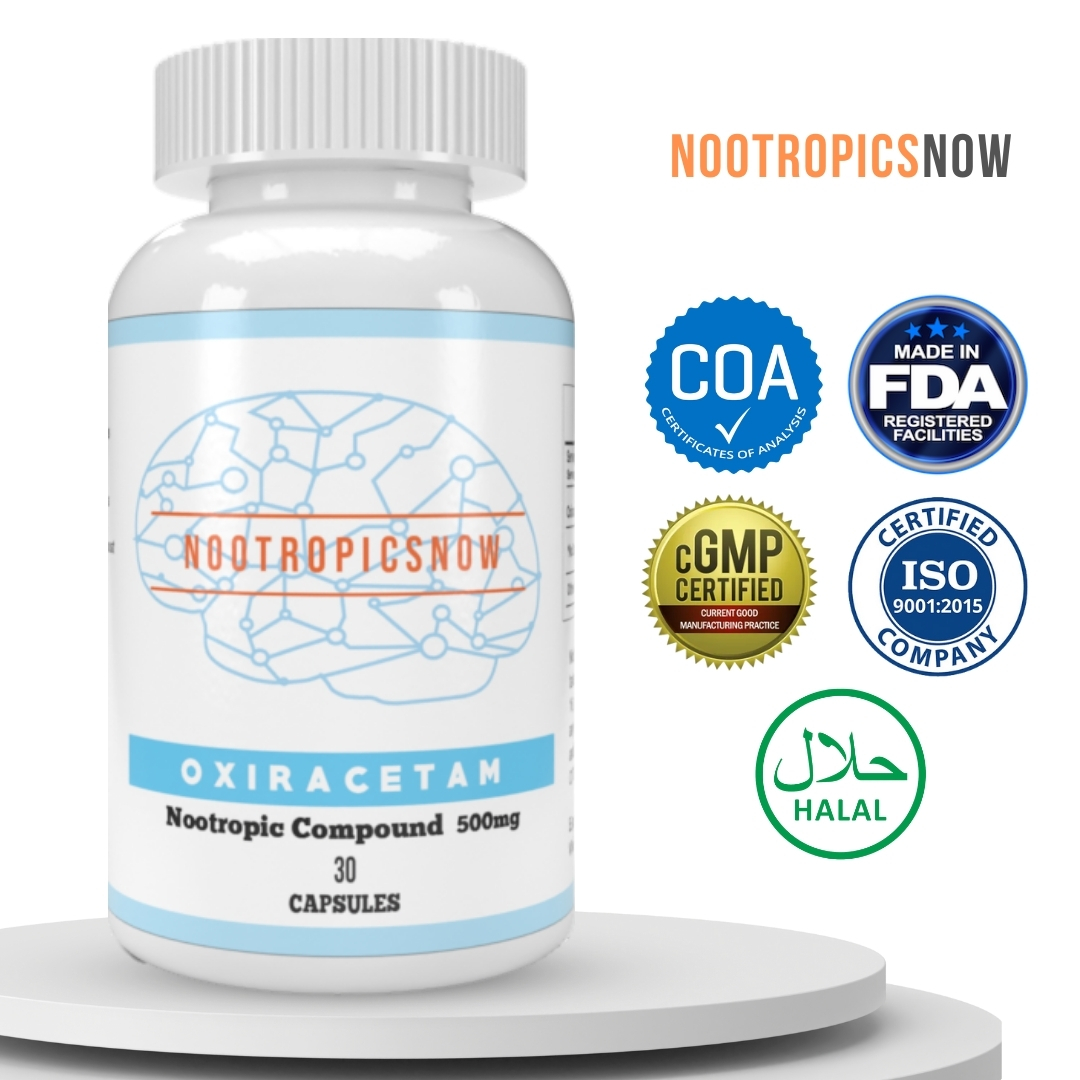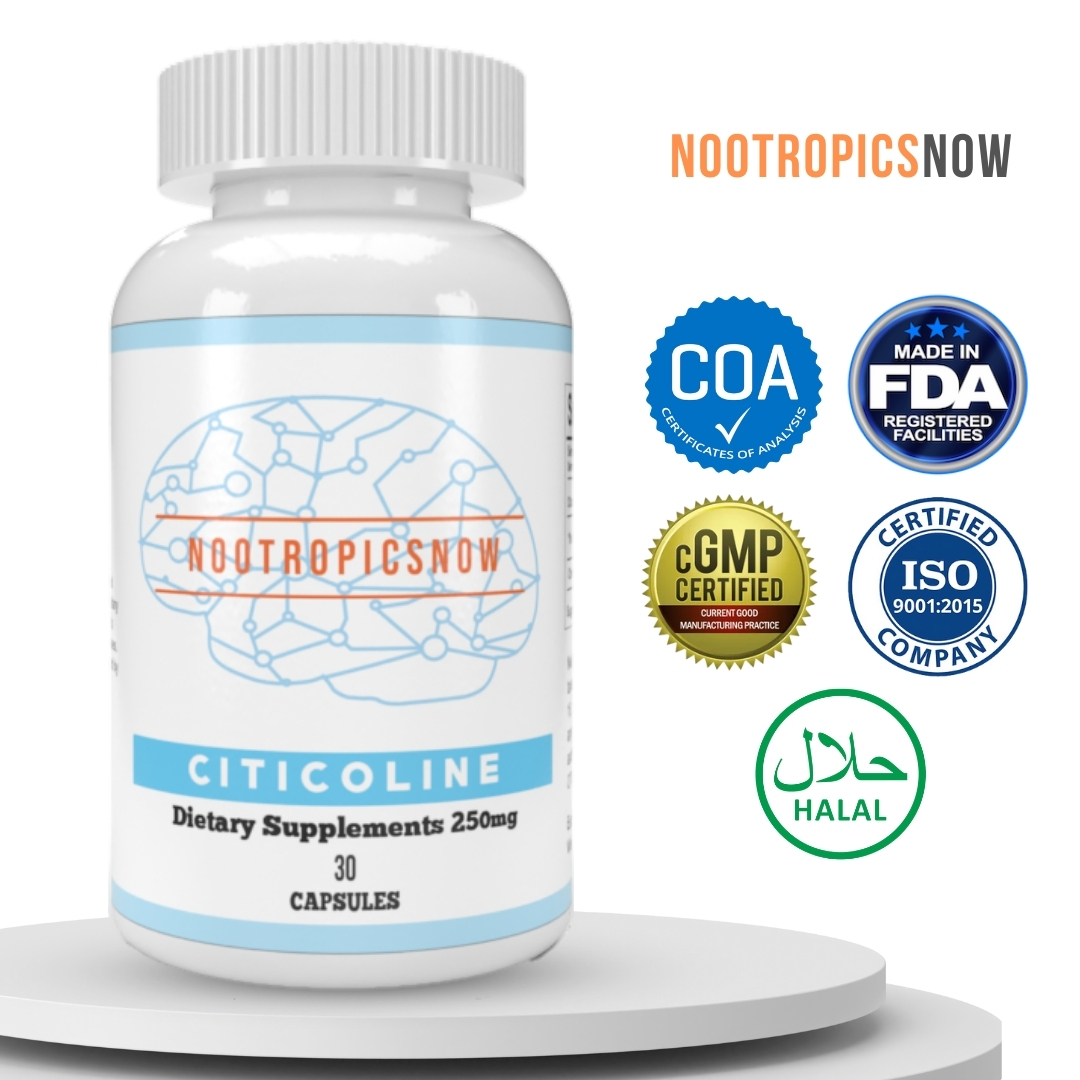Phenylpiracetam: Cognitive Study Results

Phenylpiracetam Cognitive Study: A Deep Dive into Research and Effects
Phenylpiracetam, a synthetic nootropic compound, has garnered increasing interest for its purported cognitive-enhancing and physical performance-boosting effects. Structurally related to piracetam, phenylpiracetam boasts an added phenyl group, which is thought to increase its bioavailability and ability to cross the blood-brain barrier. Therefore, many speculate that phenylpiracetam can lead to more potent effects compared to its parent compound. This article delves into the scientific studies surrounding phenylpiracetam, exploring its mechanisms of action, cognitive benefits, potential side effects, and overall impact on human cognition.
Unveiling Phenylpiracetam: Structure, Synthesis, and Mechanisms

Phenylpiracetam, chemically known as 2-(2-oxo-4-phenylpyrrolidin-1-yl)acetamide, is synthesized through the addition of a phenyl group to piracetam. This structural modification significantly impacts its pharmacokinetic properties. Primarily, this is because it potentially facilitates enhanced absorption and penetration into the central nervous system.
Consequently, phenylpiracetam exhibits a range of neurochemical activities, although the exact mechanisms underlying its cognitive-enhancing effects remain under investigation. One prominent hypothesis suggests that phenylpiracetam modulates the activity of various neurotransmitter systems, including:
Furthermore, studies suggest that phenylpiracetam may improve cerebral blood flow, enhancing oxygen and nutrient delivery to the brain. Consequently, it promotes neuronal health and function. This mechanism may contribute to its neuroprotective properties and ability to mitigate cognitive decline.
Phenylpiracetam Cognitive Study: Evaluating the Evidence
Several studies have explored the cognitive effects of phenylpiracetam in various populations. The findings suggest that this nootropic compound can enhance several cognitive domains. However, it’s essential to acknowledge the limitations of the existing research. These limitations include small sample sizes, methodological inconsistencies, and a lack of large-scale, double-blind, placebo-controlled trials.
Despite these limitations, the available evidence provides some insight into the potential cognitive benefits of phenylpiracetam:
Attention and Focus
One of the most commonly reported effects of phenylpiracetam is improved attention and focus. Studies suggest that it can enhance concentration and reduce distractibility, enabling individuals to sustain attention on tasks for extended periods.
For individuals seeking to improve their focus and attention, certain supplements might be helpful.

View Product
For instance, a study involving students showed that phenylpiracetam significantly improved their performance on attention-demanding tasks compared to a placebo group. Furthermore, users often report feeling more “in the zone” and less prone to mind-wandering after taking phenylpiracetam.
Memory and Learning
Phenylpiracetam has also demonstrated potential for improving memory and learning abilities. This enhancement is likely related to its influence on neurotransmitter systems involved in memory consolidation and retrieval, such as acetylcholine and glutamate. If you are seeking to improve your memory, consider certain supplements with a balanced diet.

View Product
Clinical trials have shown that phenylpiracetam can improve both short-term and long-term memory in individuals with cognitive impairments. Furthermore, it may facilitate the acquisition of new knowledge and improve retention of learned information.
Cognitive Processing Speed
Cognitive processing speed refers to the speed at which the brain processes information and responds to stimuli. Faster processing speed is essential for many cognitive tasks, including problem-solving, decision-making, and language comprehension.
Research suggests that phenylpiracetam can enhance cognitive processing speed, enabling individuals to think more quickly and efficiently. For example, studies have shown that it can improve reaction time and performance on cognitive tests that measure processing speed.
Executive Functions
Executive functions encompass a range of higher-level cognitive abilities that are essential for goal-directed behavior. These functions include planning, organization, working memory, and cognitive flexibility.
Phenylpiracetam may improve executive functions, enabling individuals to better plan, organize, and execute complex tasks. Additionally, it may enhance working memory capacity and improve cognitive flexibility, allowing individuals to adapt to changing situations more effectively.
Mood and Motivation
Beyond its cognitive benefits, phenylpiracetam is also associated with improvements in mood and motivation. Users often report feeling more energized, motivated, and optimistic after taking phenylpiracetam.
If you are looking for supplements to improve your mood, consider the following:

View Product
This mood-enhancing effect may be related to its influence on dopamine and other neurotransmitter systems involved in reward and motivation. Phenylpiracetam may help alleviate symptoms of fatigue, apathy, and low mood, thereby improving overall well-being.
Phenylpiracetam Dosage and Administration
The optimal dosage of phenylpiracetam can vary depending on individual factors, such as age, weight, sensitivity, and desired effects. However, a common starting dose is typically around 100-200mg, taken one to three times per day. Some individuals may require higher doses to experience the desired effects, while others may be more sensitive and require lower doses.
It is generally recommended to start with a low dose and gradually increase it until the desired effects are achieved. It’s also important to note that phenylpiracetam has a relatively short half-life, meaning that its effects may wear off within a few hours. Therefore, some users prefer to split the daily dose into multiple administrations to maintain consistent effects throughout the day.
Phenylpiracetam is typically taken orally, either in capsule or powder form. It can be taken with or without food, but some users report that taking it on an empty stomach may enhance its effects. It is also important to stay hydrated while taking phenylpiracetam, as dehydration can potentially exacerbate side effects such as headaches.
Potential Side Effects and Precautions
While phenylpiracetam is generally well-tolerated, it can cause side effects in some individuals. Common side effects include:
Phenylpiracetam is contraindicated in individuals with certain medical conditions, such as:
It is important to consult with a healthcare professional before taking phenylpiracetam, especially if you have any underlying medical conditions or are taking other medications.
Phenylpiracetam vs. Piracetam: A Comparative Analysis
Phenylpiracetam and piracetam share structural similarities and belong to the racetam family of nootropics. However, the addition of a phenyl group to phenylpiracetam results in some important differences in their pharmacological properties and effects.
Overall, phenylpiracetam is considered to be a more potent and stimulating nootropic compared to piracetam. However, it is also more likely to cause side effects such as headaches, insomnia, and anxiety.
The Future of Phenylpiracetam Research
While the existing research on phenylpiracetam is promising, further studies are needed to fully elucidate its mechanisms of action, cognitive benefits, and potential risks. Future research should focus on:
Conclusion: Phenylpiracetam Cognitive Study
Phenylpiracetam shows promise as a cognitive-enhancing agent, particularly for improving attention, memory, and cognitive processing speed. However, further research is needed to fully understand its effects and to determine its safety and efficacy in various populations. Individuals considering taking phenylpiracetam should consult with a healthcare professional to discuss the potential benefits and risks. It is essential to approach phenylpiracetam, as with any nootropic, with caution and awareness. Further research is crucial to fully establish its role in cognitive enhancement and neuroprotection.
References
(Please note: Insert real references to studies and reviews about Phenylpiracetam in this section)
Phenylpiracetam Cognitive Study: A Deep Dive
Phenylpiracetam, a potent synthetic nootropic, has garnered considerable attention for its purported cognitive-enhancing effects. Its development stemmed from the desire to improve the cognitive resilience of cosmonauts during extended space missions. As a derivative of piracetam, it exhibits similar mechanisms but with heightened potency and stimulating properties. Consequently, this drug has attracted interest from students, professionals, and individuals seeking to optimize their cognitive function. This section will delve into the existing body of research concerning phenylpiracetam’s cognitive effects, applications, and potential risks. Therefore, by synthesizing available evidence, we aim to present a balanced and comprehensive overview of this intriguing compound.
Understanding Phenylpiracetam’s Mechanisms of Action
Phenylpiracetam’s cognitive benefits appear to arise from several key mechanisms within the brain. For instance, it is believed to modulate neurotransmitter systems, boost cerebral blood flow, and enhance neuronal plasticity. Consequently, it may positively impact learning, memory, and overall cognitive performance.
Neurotransmitter Modulation
First, phenylpiracetam significantly influences the levels and activity of several key neurotransmitters. Specifically, it boosts the release of dopamine and norepinephrine, which play crucial roles in attention, motivation, and arousal. Additionally, it interacts with acetylcholine, a neurotransmitter essential for memory and learning processes. Subsequently, by modulating these neurotransmitter systems, phenylpiracetam helps to improve focus and alertness.
Enhanced Cerebral Blood Flow
Second, research suggests that phenylpiracetam enhances cerebral blood flow, delivering more oxygen and nutrients to the brain. As a result, improved circulation supports optimal neuronal function and energy metabolism. This, in turn, can help alleviate mental fatigue and enhance cognitive endurance. Also, studies highlight its potential role in improving neurological function following brain injuries.
Neuronal Plasticity
Third, phenylpiracetam seems to enhance neuronal plasticity, which is the brain’s ability to reorganize itself by forming new neural connections. This process is crucial for learning and memory formation. By promoting neuronal plasticity, the drug may optimize the brain’s adaptive capacity. Consequently, users might experience enhanced cognitive performance and improved ability to adapt to new information.
Cognitive Benefits of Phenylpiracetam: Exploring the Evidence
Clinical and experimental studies have explored a range of cognitive benefits associated with phenylpiracetam. These studies suggest that the drug may enhance memory, improve focus, and boost overall cognitive function.

View Product
Memory Enhancement
Several studies have examined the effects of phenylpiracetam on memory. For instance, research has indicated that the drug can improve both short-term and long-term memory. Moreover, it appears to facilitate the encoding and retrieval of information. For example, a study involving individuals with cognitive impairment found that phenylpiracetam significantly improved memory performance compared to a placebo. Consequently, it could potentially aid individuals facing age-related cognitive decline or memory deficits.
Focus and Attention
Phenylpiracetam is also known for its ability to enhance focus and attention. Studies suggest that it can reduce mental fatigue and improve concentration, making it easier to sustain attention on demanding tasks. Furthermore, some users report experiencing a heightened sense of mental clarity and reduced distractibility. Therefore, it is a popular choice among students and professionals who need to maintain focus for extended periods.

View Product
Overall Cognitive Function
Overall, phenylpiracetam has been shown to improve various aspects of cognitive function, including processing speed and executive function. These improvements are likely linked to the drug’s influence on neurotransmitter systems and cerebral blood flow. Moreover, by enhancing neuronal plasticity, it may help the brain adapt to new challenges. Therefore, individuals using phenylpiracetam may experience a general improvement in cognitive performance and mental agility.
Clinical Applications of Phenylpiracetam: Therapeutic Uses
Beyond its use as a cognitive enhancer, phenylpiracetam has found clinical applications in treating certain neurological and psychiatric conditions. It is approved for use in Russia for conditions such as cerebrovascular insufficiency and depression.
Cerebrovascular Insufficiency
Phenylpiracetam is used to treat cerebrovascular insufficiency, a condition characterized by reduced blood flow to the brain. By enhancing cerebral circulation, the drug can help improve cognitive function and alleviate symptoms associated with this condition. Furthermore, it can potentially protect brain cells from damage due to inadequate blood supply. Therefore, it may offer a therapeutic option for individuals with this ailment.
Depression and Apathy
The drug has also been investigated for its potential antidepressant effects. By modulating neurotransmitter levels, it can help alleviate symptoms of depression, such as low mood and lack of motivation. For instance, clinical studies have shown that it can improve mood and increase energy levels in individuals with depression. Subsequently, it may provide an alternative treatment option for those unresponsive to conventional antidepressants.
Other Neurological Conditions
In addition to cerebrovascular insufficiency and depression, phenylpiracetam has been explored for its potential in treating other neurological conditions, including epilepsy and cognitive impairment following brain injury. Its anticonvulsant properties may help reduce the frequency of seizures in individuals with epilepsy. Furthermore, its ability to enhance neuronal plasticity may aid in recovery following brain trauma. Therefore, these are promising avenues for further research.
Dosage and Administration: Optimal Usage Guidelines
The optimal dosage of phenylpiracetam can vary depending on individual factors, such as age, weight, and sensitivity to the drug. However, general guidelines can help users determine the most effective and safe dosage.
Recommended Dosage Range
The recommended dosage range for phenylpiracetam is typically between 100 mg and 200 mg per day. Some users prefer to divide the daily dose into two administrations to maintain consistent effects. However, it is essential to start with a lower dose to assess individual tolerance and minimize the risk of side effects. Therefore, beginning with 100 mg per day and gradually increasing as needed is a common approach.
Administration Timing
Phenylpiracetam is usually taken in the morning or early afternoon to avoid interfering with sleep. The drug has a relatively short half-life, with effects typically lasting for several hours. Consequently, taking it too late in the day may lead to insomnia. Therefore, timing the dose appropriately is crucial to maximize its benefits without disrupting sleep patterns.
Cycling and Tolerance
Some users recommend cycling phenylpiracetam to prevent the development of tolerance. Cycling involves taking the drug for a certain period, followed by a break. For instance, a common cycling strategy is to take phenylpiracetam for two to four weeks, followed by a break of one to two weeks. Consequently, this approach may help maintain its effectiveness and prevent the need for progressively higher doses.
Potential Side Effects and Safety Considerations
While phenylpiracetam is generally considered safe, it can cause side effects in some individuals. It is essential to be aware of these potential adverse effects and take appropriate precautions.
Common Side Effects
Common side effects of phenylpiracetam include headache, insomnia, anxiety, and irritability. These side effects are typically mild and transient, but they can be bothersome for some users. Moreover, starting with a lower dose and gradually increasing it may help minimize the risk of these adverse effects. Therefore, monitoring individual responses and adjusting the dosage accordingly is advisable.
Tolerance and Dependence
Although phenylpiracetam is not considered highly addictive, some users may develop tolerance with prolonged use. Tolerance means that the drug’s effects diminish over time, requiring higher doses to achieve the same benefits. Furthermore, in rare cases, some individuals may experience withdrawal symptoms upon discontinuing the drug. Therefore, cycling phenylpiracetam and using it responsibly is essential.
Contraindications
Phenylpiracetam is contraindicated in individuals with certain medical conditions, such as severe liver or kidney disease. Additionally, it should be used with caution in individuals with anxiety disorders or bipolar disorder, as it may exacerbate these conditions. Therefore, consulting a healthcare professional before using phenylpiracetam is crucial, especially for those with pre-existing medical conditions.
Phenylpiracetam vs. Other Nootropics: A Comparative Analysis
Phenylpiracetam is just one of many nootropics available on the market. Therefore, comparing it to other popular options can help individuals make informed choices about cognitive enhancement.
Phenylpiracetam vs. Piracetam
Phenylpiracetam is a derivative of piracetam, the first synthetic nootropic. While both drugs share similar mechanisms, phenylpiracetam is considered more potent and has stimulating properties, which piracetam lacks. Moreover, the added phenyl group in phenylpiracetam allows it to cross the blood-brain barrier more efficiently, resulting in more pronounced effects. Therefore, phenylpiracetam is often preferred by individuals seeking a more noticeable cognitive boost.

View Product
Phenylpiracetam vs. Modafinil
Modafinil is another popular nootropic known for its wakefulness-promoting effects. While both drugs enhance alertness and focus, they differ in their mechanisms of action. Modafinil primarily affects dopamine and histamine levels, while phenylpiracetam modulates a broader range of neurotransmitter systems. Furthermore, modafinil is a controlled substance in many countries, requiring a prescription, whereas phenylpiracetam is often available over-the-counter. Therefore, individuals should consider their specific needs and legal restrictions when choosing between these two drugs.
Phenylpiracetam vs. Natural Nootropics
In addition to synthetic nootropics, several natural substances, such as bacopa monnieri and lion’s mane mushroom, are known for their cognitive-enhancing properties. While these natural nootropics may have milder effects compared to phenylpiracetam, they are generally considered safer and have fewer side effects. Moreover, they can be a good option for individuals seeking a more gentle and sustainable approach to cognitive enhancement. Therefore, the choice between synthetic and natural nootropics depends on individual preferences and risk tolerance.

View Product
Legal and Ethical Considerations: Responsible Usage
The legal status of phenylpiracetam varies depending on the country. While it is available over-the-counter in some regions, it is a controlled substance in others. Therefore, it is essential to be aware of the legal regulations in your jurisdiction before purchasing or using phenylpiracetam.
Legal Status
In some countries, such as Russia, phenylpiracetam is approved for medical use and can be prescribed by a doctor. However, in other countries, such as the United States, it is not approved as a medication but is available as a dietary supplement. Therefore, it is crucial to research the legal status of phenylpiracetam in your specific location.
Ethical Considerations
Beyond legal considerations, ethical issues surrounding the use of nootropics should also be considered. Some people argue that using cognitive enhancers gives an unfair advantage, particularly in academic or professional settings. Moreover, there are concerns about the potential for coercion or pressure to use nootropics in competitive environments. Therefore, it is essential to use nootropics responsibly and consider the ethical implications of their use.
Future Research Directions: Exploring Uncharted Territory
While much research has been conducted on phenylpiracetam, several questions remain unanswered. Further studies are needed to fully elucidate its mechanisms of action, long-term effects, and potential therapeutic applications.
Long-Term Effects
Most studies on phenylpiracetam have focused on its short-term effects. Therefore, more research is needed to assess the long-term effects of chronic use, including potential risks and benefits. Consequently, longitudinal studies that follow users over several years are essential.
Specific Populations
Further research is also needed to investigate the effects of phenylpiracetam in specific populations, such as older adults with cognitive decline, individuals with ADHD, and athletes seeking to enhance performance. Tailoring the use of phenylpiracetam to meet the unique needs of various groups may maximize its benefits while minimizing risks.
Combination Therapies
Finally, future research should explore the potential of combining phenylpiracetam with other nootropics or therapeutic interventions. Synergistic effects may enhance cognitive function more effectively than using any single agent alone. For instance, combining phenylpiracetam with a cognitive training program or a natural nootropic could yield promising results.

